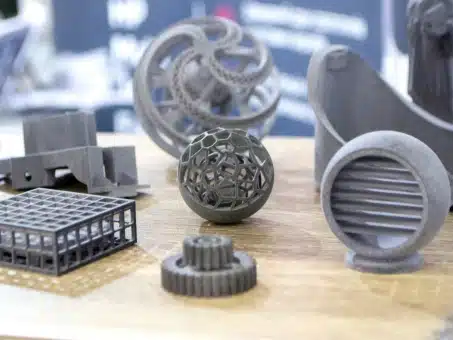DED in 3D printing isn’t sci-fi anymore. It’s real. It’s here. And it’s already reshaping metal manufacturing. But is it worth the hype?
Let’s be clear: Directed Energy Deposition (DED) is not entry-level. It’s precision tech for pros. Lasers, metal powder, expert control—layer by high-energy layer.
No molds. Minimal waste. Maximum customization. DED offers powerful capabilities—but it demands serious know-how.
So, what is DED really like in the field? Let’s break it down—clearly, accurately, and with respect for what this tech actually delivers.
DED Promises Speed. But What’s the Catch?
DED Builds Fast. Very Fast.
DED deposits metal exactly where it’s needed—fast. Sloped surfaces, curved geometries, multi-material zones? Handled.
Ahn’s 2021 study proved it: DED enables aggressive build speeds and geometric flexibility with minimal tooling.
For aerospace and defense, that’s gold. Rapid part production, repairs, and redesigns are all in play.
But speed is only part of the story.
DED Isn’t Plug-and-Play—It’s a Precision Tool.
Let’s correct the myth: DED isn’t “too complex.” It’s specialized.
Setup takes training. Laser parameters, feed rates, and deposition paths must be dialed in with surgical accuracy.
That’s not a downside—it’s a fact of advanced manufacturing. DED rewards expertise and planning. Sloppy prep? Poor parts. Expert execution? Outstanding results.
As Ahn (2021) and others made clear: DED isn’t for the casual user—it’s for those who know what they’re doing.
DED Offers Precision. But at What Cost?
DED shines in building intricate geometries and custom alloys. Imran et al. (2024) showed how it meets ISO and ASTM standards with rigor.
But surface finish? Still rough. That’s expected in high-energy deposition. Think “functional finish” out of the box—polishing and post-processing bring the finesse.
Thermal stress, porosity, and flow challenges are real. That’s why advanced players use real-time monitoring, digital twins, and AI tools to control quality.
Bottom line: rough prints aren’t defects—they’re part of a high-performance workflow. The best teams build with that in mind
DED Is Versatile. But Is It Universal?
DED handles functionally graded materials (FGMs), alloy mixing, and hybrid part builds with power and precision.
Strauss et al. (2025) documented up to 40% material savings by using high-cost metals only where needed.
This is what smart manufacturing looks like: performance tailored by layer, function by function.
Resolution? Sure, PBF still leads in micro-detail. But for large, strong, multi-material builds, DED is unmatched
DED Cuts Waste. But Does It Save the Planet?
Less Waste. Big Win.
DED uses only what it needs. That’s a sustainability flex.
Fidan et al. (2024) found that DED cuts waste by up to 80%. That’s a win.
Energy use? Higher than subtractive methods in some cases—but that’s not a flaw. It’s a call to optimize. Smarter paths, tighter controls, and machine learning all help reduce the energy footprint.
DED’s sustainability promise isn’t automatic—it’s engineerable.
DED Repairs Parts. But Can You Trust It?
Fix It Fast
DED isn’t just about new parts—it’s also about saving the old ones.
Pratt & Whitney (RTX) slashed downtime 60% using it for high-stakes aerospace repairs.
But successful repair isn’t just about the laser—it’s about control. Calibration, operator skill, and feedback loops matter. When mastered, the results are game-changing.
DED Is the Future. Or Is It?
Pioneering Innovations
DED isn’t just a trend—it’s evolving.
FormAlloy’s DEDSmart® technology proves it. They combine robotics, lasers, and multi-material builds.
Their systems drive breakthroughs in aerospace, defense, and energy. They also offer smart repairs, custom parts, and fast construction.
FormAlloy isn’t alone. But they’re leading.
Adoption? Still Slow.
Strauss et al. (2025) flagged the hurdles: high startup costs, complex workflows, and skill shortages.
Even if DED is amazing, it’s not effortless. Integration takes time, money, and people.
That’s the real friction slowing mass adoption.
So, Is DED the Metal Savior? Or a Sci-Fi Flop?
Neither. It’s a precision platform that demands expertise—and rewards it.
DED in 3D printing builds fast, repairs smart, minimizes waste, and enables materials you can’t make any other way. But it’s not for amateurs.
Want high performance? Master the process. Want ROI? Partner with the pros.
DED isn’t “easy”—but it’s effective. And it’s already redefining what’s possible.
DED in 3D printing isn’t the future. It’s already here.

